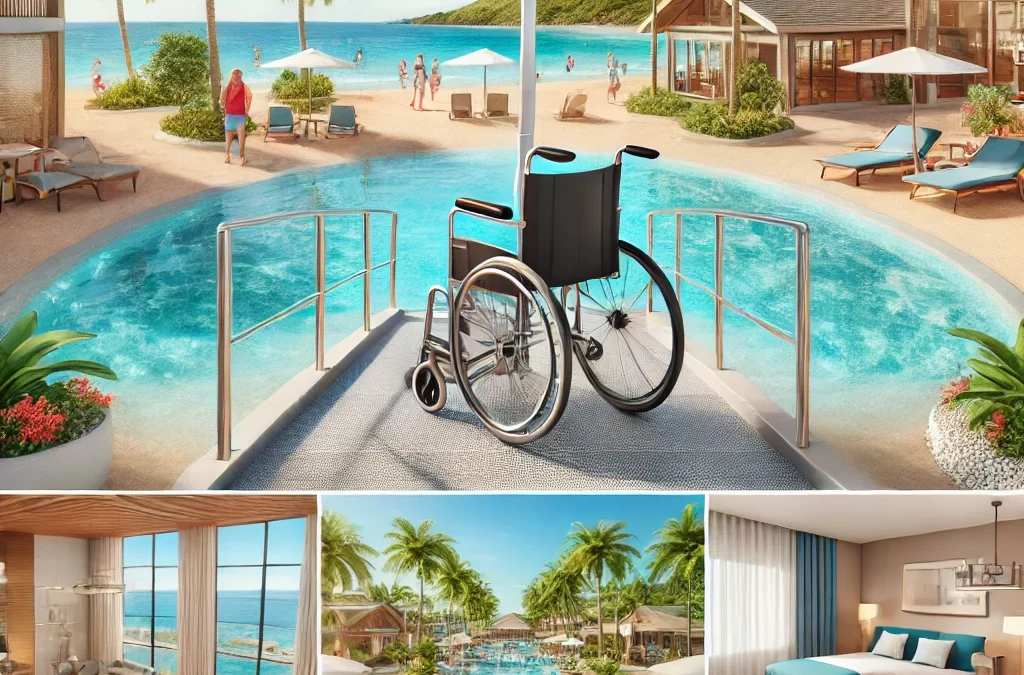All-inclusive resorts have long been a popular choice for travelers seeking relaxation, luxury, and convenience. In recent years, these resorts have made significant strides in accessibility, recognizing the importance of inclusivity for travelers with disabilities. While progress has been made, there are still gaps that need to be addressed to ensure every guest enjoys a truly barrier-free vacation experience.
The Progress So Far
Many all-inclusive resorts have taken commendable steps toward accessibility, offering features such as:
-
Accessible Rooms – Wider doorways, roll-in showers, grab bars, lower sinks, and adapted furniture have become more common in resort accommodations.
-
Pool and Beach Access – Pool lifts, zero-entry pools, and even beach wheelchairs are increasingly available.
-
Mobility-Friendly Grounds – Ramps, elevators, and smooth pathways have improved ease of movement around the resort.
-
Inclusive Dining – Restaurants now offer more accessible seating arrangements and trained staff to assist guests with disabilities.
-
Staff Training – Many resorts provide disability-awareness training to their employees to ensure a more inclusive and respectful environment.
The Challenges That Remain
Despite these improvements, there are still areas where all-inclusive resorts fall short:
-
Limited Availability of Accessible Rooms – Many resorts offer only a handful of accessible rooms, making it difficult for travelers with disabilities to secure accommodations.
-
Lack of Standardization – Accessibility features vary widely from resort to resort, with no universal standard ensuring a consistent experience.
-
Excursion and Activity Accessibility – While resorts may be accessible, many of their off-site excursions and activities are not adapted for travelers with disabilities.
-
Communication Gaps – Information about accessibility features is often vague or incomplete on resort websites, making it hard for travelers to plan confidently.
-
Beach Access Limitations – While some resorts provide beach wheelchairs, the accessibility of beachside restaurants, bars, and cabanas is still inconsistent.
What Needs to Happen Next?
To achieve true inclusivity, all-inclusive resorts must continue improving their accessibility by:
-
Expanding the Availability of Accessible Rooms – Increasing the number of adapted accommodations and ensuring they meet a variety of needs.
-
Creating Universal Standards – Establishing industry-wide accessibility guidelines would help ensure consistency and reliability.
-
Enhancing Excursion Accessibility – Partnering with local tour operators to develop inclusive adventure and sightseeing experiences.
-
Providing Clearer Information – Offering detailed, accurate descriptions of accessibility features online to help travelers make informed decisions.
-
Listening to Travelers with Disabilities – Engaging directly with travelers with disabilities to understand their needs and tailor resort experiences accordingly.
The Bottom Line
All-inclusive resorts have come a long way in making vacations more accessible, but there is still room for improvement. With continued efforts and a commitment to inclusivity, these resorts can ensure that every guest—regardless of ability—can experience the joy of a seamless, relaxing, and unforgettable getaway.
As an amputee and a passionate advocate for accessible travel, I understand the challenges firsthand. If you’re looking for an all-inclusive resort that meets your accessibility needs, let me help you find the perfect destination!
🌴✈️ Ready to book your next accessible vacation? Contact us today! 🌍💙

